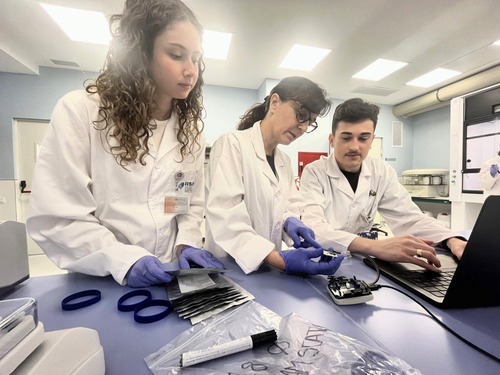This Saturday, May 31, is World No Tobacco Day and calls for preventive, educational and legislative measures to protect the health of children, reducing exposure to the toxic substances in smoke that persist once smoking is over.

The Institut d’Investigació Sanitària Pere Virgili (IISPV) continues its research on the effects produced by the toxic substances in tobacco, especially in children. On the occasion of the celebration of World No Tobacco Day, Noelia Ramírez, researcher at the IISPV and member of the research group in Pediatrics, Nutrition and Human Development (PEDINUR) of the University Rovira i Virgili (URV) and the IISPV, presented the latest results of her studies on the consequences of residual smoke.
Ramírez stresses that it is essential to be aware of the harmful effects that exist when exposed to nicotine, especially in the case of children under 5 years of age. In this sense, he explains that the so-called third-hand smoke is especially dangerous for the youngest children and is usually underestimated by parents and public authorities. The fact is that “this route of exposure is still not sufficiently well known. The toxic substances that make up this residual smoke also remain on objects and furniture surfaces, as well as the skin, mouth, lungs and clothing”. Ramírez stresses that, on world days like this one, it is important to protect the health of the population, especially children, with preventive measures, as well as educational and legislative measures.
Although anti-smoking policies have reduced exposure to smoke in public spaces, Ramirez says, many children are still exposed at home and outdoors.
Mayor riesgo de enfermedades respiratorias El impacto de este tipo de humo se traduce, en el caso de los más vulnerables, como los niños y niñas, en alteraciones del crecimiento, en un mayor riesgo de enfermedades respiratorias, malformaciones congénitas no cromosómicas (en caso de una exposición en la gestación) y caries dentales y enfermedades como otitis recurrentes.
El humo residual persiste, reacciona con otras sustancias del ambiente y cuesta eliminarlo, puesto que las sustancias tóxicas, como se apuntaba, resisten una limpieza superficial, como la ventilación, y también quedan partículas en movimiento, dependiendo de las temperaturas o flujos de ventilación. Además, cuando interactúan con una persona ésta también puede repartir en otros rincones estas sustancias.
Algunos de los consejos preventivos para evitar la presencia prolongada del humo de tercera mano son, entre otros, limitar los espacios donde se fuma, limpiar a fondo donde se haga -teniendo en cuenta materiales como alfombras y cortinas- y llevar en el caso de los fumadores, especialmente si tienen contacto con los más pequeños, una limpieza profunda y cuidadosa de manos, boca y ropa.